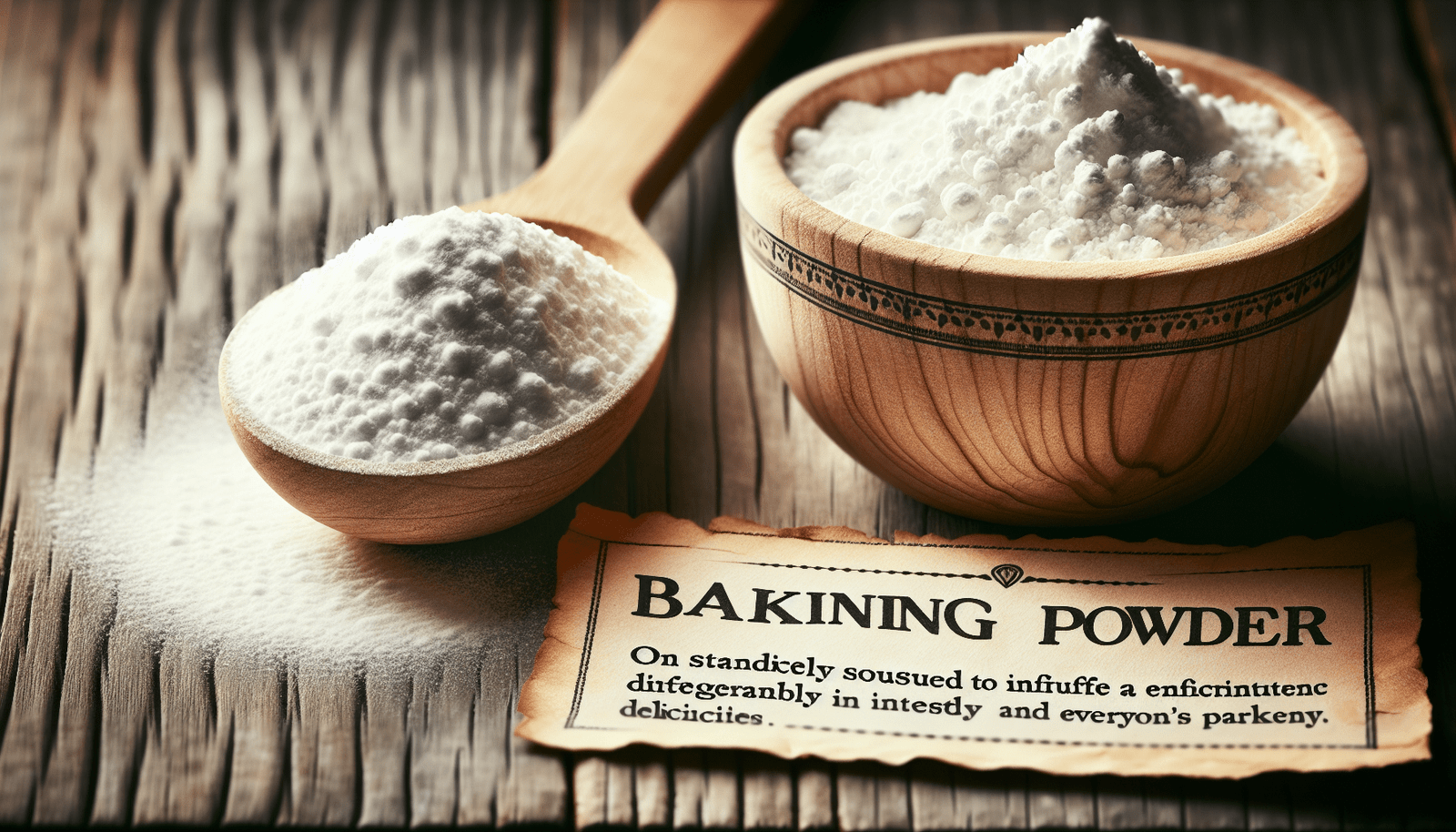What’s The Difference Between Baking Soda And Baking Powder?
You’ve probably seen recipes that call for either baking soda or baking powder, but what exactly is the difference between these two pantry staples? Let’s break it down and figure out when to use each one in your baking adventures.
Baking Soda
Let’s start with baking soda. This ingredient is a leavening agent, which means it helps baked goods rise. Baking soda is a base compound, also known as sodium bicarbonate. When combined with an acidic ingredient like vinegar, lemon juice, or yogurt, baking soda reacts and produces carbon dioxide gas, which makes your baked goods fluffy and light.
Baking Powder
On the other hand, baking powder is a combination of baking soda, an acid (like cream of tartar), and a starch to absorb moisture and prevent the ingredients from reacting prematurely. There are two types of baking powder: single-acting and double-acting. Single-acting baking powder reacts with liquid, so you must bake your batter immediately. Meanwhile, double-acting baking powder reacts twice – once when it gets wet and again when it’s exposed to heat.
The Key Difference
So, what’s the key difference between baking soda and baking powder? The main distinction is that baking soda needs an acidic ingredient to activate its leavening properties, while baking powder contains its own acid and can be activated with liquid or heat.
When To Use Baking Soda
Baking soda is best used in recipes that already have an acidic ingredient, such as buttermilk, yogurt, or chocolate. It works well in cookies, cakes, and other baked goods that need a quick rise. Keep in mind that too much baking soda can leave a metallic aftertaste in your baked treats, so use it sparingly.
When To Use Baking Powder
Baking powder is a more versatile option, as it can be used in recipes that do not contain acidic ingredients. It’s perfect for making fluffy pancakes, light and airy muffins, and tender scones. Just remember that using too much baking powder can lead to a bitter taste, so follow the recipe measurements carefully.
Substituting One For The Other
If you find yourself out of baking soda or baking powder, can you substitute one for the other? The short answer is no. Since baking soda requires an acid to activate, you can’t swap it for baking powder unless you have an acidic ingredient in your recipe. On the other hand, using baking powder in place of baking soda may not provide enough leavening power, leading to dense baked goods.
Testing Baking Soda And Baking Powder
To check if your baking soda or baking powder is still active, you can perform a simple test.
For baking soda, mix a small amount with vinegar or lemon juice. If it fizzes and bubbles, it’s still good to use.
For baking powder, stir a small amount into hot water. If it bubbles vigorously, it’s fresh.
If your leavening agents fail the test, it’s time to invest in a new box to ensure your baked goods turn out perfectly.
How To Properly Measure Baking Soda And Baking Powder
To avoid any mishaps in your baking adventures, it’s essential to measure baking soda and baking powder accurately.
| Tablespoons | Teaspoons |
|---|---|
| 1 tablespoon | 3 teaspoons |
| 1/2 tablespoon | 1 1/2 teaspoons |
| 1/4 tablespoon | 3/4 teaspoon |
Remember, too much or too little of these leavening agents can affect the texture and taste of your baked goods, so measure carefully.
Storing Baking Soda And Baking Powder
Proper storage of baking soda and baking powder is crucial to ensure their effectiveness.
Keep both ingredients in a cool, dry place away from heat and humidity. It’s best to store them in airtight containers to prevent moisture from causing clumping. Check the expiration dates on the containers regularly to ensure the leavening agents are still active.
Troubleshooting Common Baking Issues
Sometimes, despite following a recipe to the letter, your baked goods may not turn out as expected. Here are some common baking issues and how to troubleshoot them:
Flat Baked Goods
If your cookies, cakes, or muffins are turning out flat, it could be due to using expired baking soda or baking powder. Check the freshness of your leavening agents and replace them if necessary. Also, ensure you are using the correct measurements and following the recipe instructions carefully.
Bitter Taste
An unpleasant bitter taste in your baked treats can be a result of using too much baking powder. Be sure to measure accurately and use the appropriate amount specified in the recipe. Additionally, check the expiration date of your baking powder to ensure it’s still effective.
Dense Texture
If your bread, pancakes, or biscuits are coming out dense and heavy, it may be due to overmixing the batter. Avoid overworking the dough, as this can develop too much gluten, leading to a tough texture. Also, make sure you are not using too much flour, which can weigh down the finished product.
Experimenting With Baking Soda And Baking Powder
Now that you understand the differences between baking soda and baking powder and how to use them effectively, it’s time to get creative in the kitchen.
Try experimenting with different recipes to see how these leavening agents affect the texture and taste of your baked goods. Whether you’re making fluffy pancakes, airy cakes, or tender biscuits, understanding the role of baking soda and baking powder will help you become a confident baker.
So, the next time you reach for your baking supplies, remember the distinct properties of baking soda and baking powder and choose the right one for your culinary masterpiece. Happy baking!
